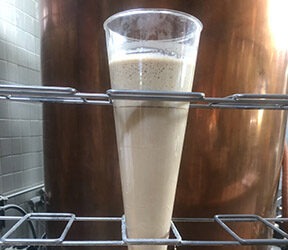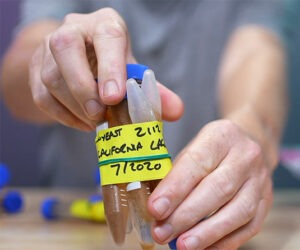Harvesting Yeast: Tips from the Pros
The pros do it all the time. But most homebrewers don’t realize that harvesting and repitching yeast is an easy and cost-effective way to brew beer.
If you’ve ever had trouble with low pitch rates or “lag times” between pitching and the start of fermentation, your beer definitely will benefit from repitching. With a hearty batch of harvested yeast, you can get a vigorous fermentation started within a few hours. This minimizes the risk of contamination. And, in many cases, beer made with harvested yeast is better than beer made with first-generation yeast.
So, how do you do it? To answer that question, we called three commercial brewers from around the country and asked them to divulge their foolproof methods.
Here are a few general guidelines. For a five-gallon batch of brew, one cup of harvested yeast is plenty. Ideally, you should try to get the middle layer, because that’s the best stuff. For the average homebrewer, re-pitched yeast can safely be used for four or five successive batches.
Refrigerated yeast can last about a week or two, but for sanitation reasons, it’s better to pitch it within the first few days of harvesting. As always, good sanitation is key. The yeast should feel smooth — like putty in your hands — but never gritty or chunky.
The technique is easy: You can pitch your harvested yeast directly into the fermenter or use it to make a starter. As long as the yeast strain is appropriate to the beer style, repitching can help you become a better brewer. Now a few words from the pros.
Brewer: Aaron Taubman is a brewer at the Millstream Brewing Company in Amana, Iowa. He earned a biochemistry degree from the University of Iowa and took the seven-week microbrewers’ prep course at the Siebel Institute. Taubman worked for Isadore Street Brewing in Wisconsin before joining Millstream.
Repitching is the best way to ensure that you get a nice, aggressive fermentation. The quantity of yeast is essential, as is the quality of that yeast.
As a homebrewer, I always thought it would be neat to get an inverted carboy so I could harvest by drawing off the yeast. Here at Millstream, we have flat-bottom fermenters so we can’t draw out the yeast. We put on clean suits, a mask and a hair net, then we reach into the vessel with utensils and scoop the yeast out.We use plastic utensils that have been acid-washed and are used exclusively for collecting yeast. Plastic bucket fermenters are the easiest way for the homebrewer to collect yeast. All you have to do is reach in, scoop out and store the yeast in a sanitized container. Try to get the middle yeast, since this is the healthiest stuff. The very bottom is just dead yeast and trub. In the middle, you’ll find yeast with a yellow, putty-like consistency. This is what you want. If it’s too dark, you should dump it, since the yeast has probably gone bad.
Another key is never to harvest from a high-gravity beer and repitch it in a light beer. For example, don’t use yeast from a stout to pitch a German lager. This will almost certainly change the color of the beer and probably the flavor. The best thing is to consider high-gravity brews (like stouts or barleywine) as dead-ends for your yeast. The same is true for bitter beers. Don’t pitch yeast from an IPA into a lager. Yeast tends to hold the bitter characteristics of a bitter brew. If you reuse it, the bitterness will carry over.



